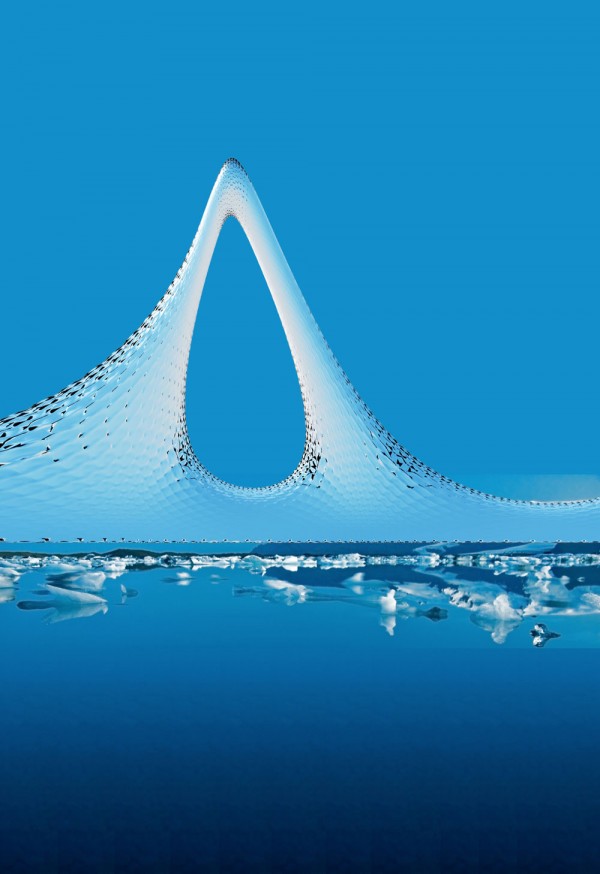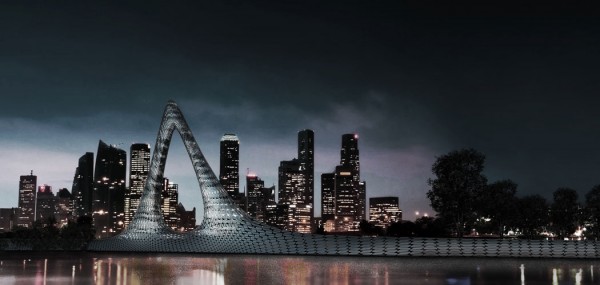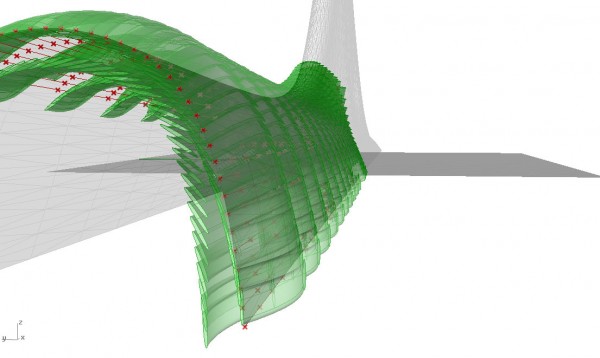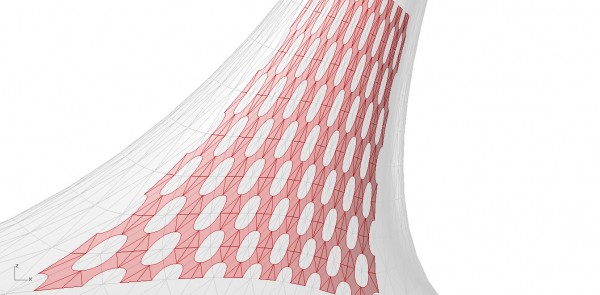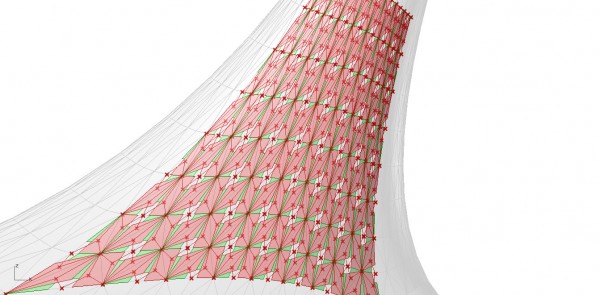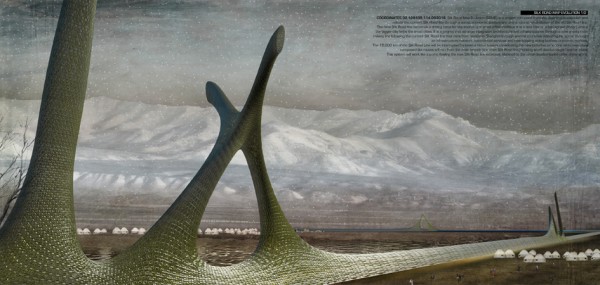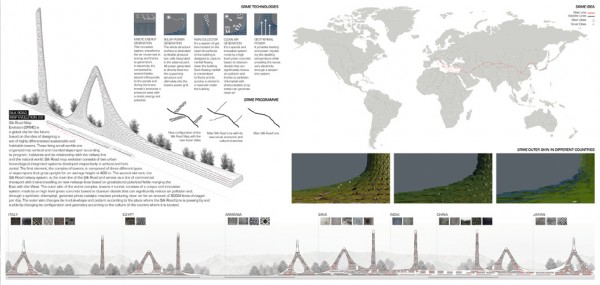Italian architectural studio OFL architecture received the first prize in the international competition “New Silk Road Map” that aims for the recovery, reinterpretation, and reconfiguration of the Silk Road – a network of commercial, cultural, and religious paths that connected the Eastern and Western civilizations for more than 2000 years.
OFL’s project description:
Silk Road Map Evolution (SRME) is a project born out of the will to revive and regenerate the current layout of the silk road. This is to be accomplished by means of a social, economic, political and architectonic redevelopment of the historic stretch of the road that once belonged to Marco Polo.
The project deeply integrates infrastructure with architecture and by means of a new railway system functioning on gravitational platforms follows the trail from Venice to Xian, Shanghai and Tokyo, extending its “arms” to create new infrastructures, commercial services and residences. A wiry MOTOR CITY extends itself to help out urban realities and struggling economies. The (linearly) diffused city runs into other micro-cities in such a way that the greater entity hooks onto the smaller ones to help them survive and, like an economic pump, extends life from the greater nodes to the smaller and poorer extremities. The 15,000 km of the silk road shall be broken up by bionic towers which will represent the centers of new urban sprawls. The new silk road line will also serve as the GENERATOR of other paths that will branch off of the main course of the road to develop a larger economic armature.
The studio driven towards the development of the SRME was created following an attentive analysis of the actual condition of the city on a global level. The common problem of large contemporary cities is that of congestion of circulation. This is a natural consequence of demographic expansion, a phenomenon that can be defined as explosive considering the exponential trend that manifested in the 20th century. The “classic” urban structure of cities developed concentrically around a central nucleus is no longer capable of resolving the problematic issues of traffic and pollution. As a result, the model of an ideal city will evolve, placing emphasis on MOBILITY and creating an environment in which displacements are reduced to a minimum and sustainable means of transport are implemented. The key issues of the innovative project of mobility are therefore the growing mechanization of displacements and the abandon of personal vehicles.
Silk Road Map Evolution will become a global city for the future, made up of extra long tunnels and highly sustainable and habitable towers of various forms. These small livable worlds will be organized in vertical and circular skyscrapers whose forms will be dictated by their internal functions and by their relationship with the railway system and the natural world. The fundamental goal of this innovative project of the spatial city is that of reducing to a minimum the percentage of soil disrupted for construction and urban structures. This also addresses the problems of architectonic development in large metropolises as well as overpopulation and increasing demographics of existing cities. Marginal suburbs and peripheral cities which cause great social problems will disappear.
From an architectonic and urban point of view, SRME is made up of two urban, ecological integrated systems. The first element, that of the towers, is composed of three different types of skyscrapers which will rise to a median height of 400 meters. The second element, that of the railway system, is made up of the main path of the silk road as well as a new line of commercial and public transport with trains that travel on polarized gravitational fields uniting the Orient with the Occident. The external skin of the entire project is composed of an innovative system made up of a cement based on titanium dioxide. This significantly reduces atmospheric disturbance and thanks to a particular synthetic chlorophyl generates a photocatalytic reaction that produces clean air for a quantity equal to 500 liters of oxygen a day for every 200 square meters of surface. An unprecedented energy system is also placed on the inside of the train tracks. This is composed of various piezoelectric panels integrated into the tracks which capture energy created by waves of pressure resulting from train traffic and transform it into electricity.
Design team: Francesco Lipari, Vanessa Todaro, Andrea Debilio, Alejandro Liu Cheng (parametric design consultant)

